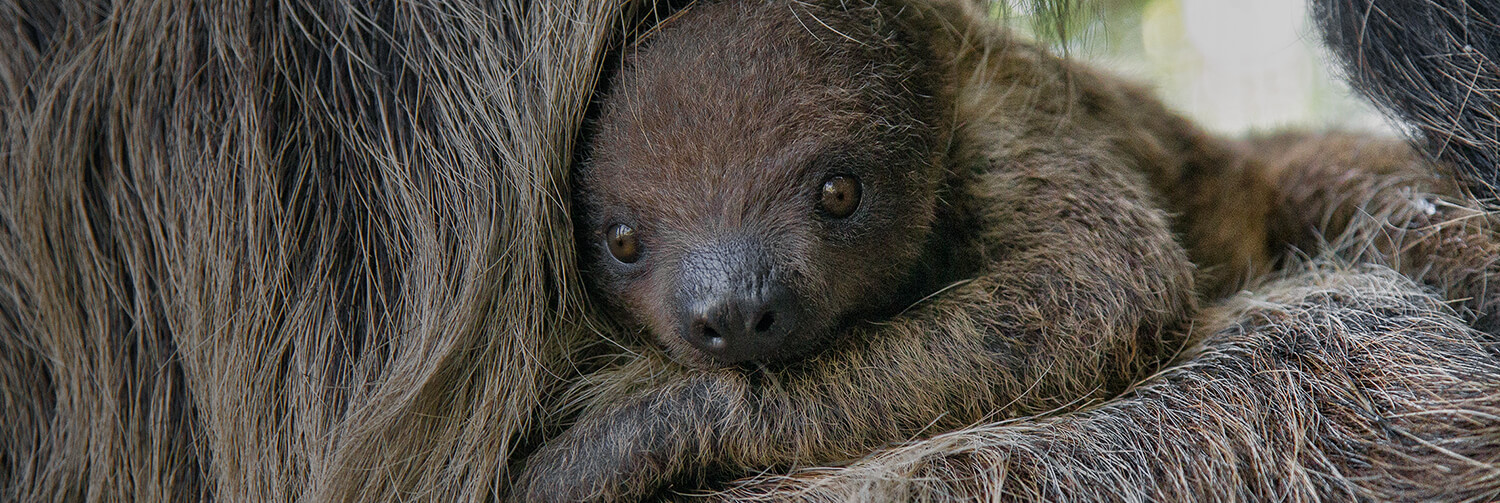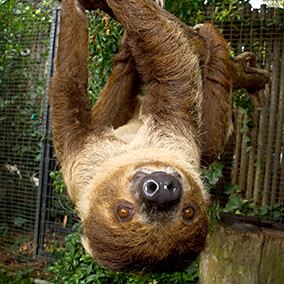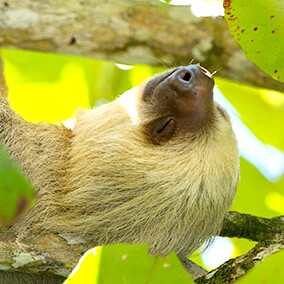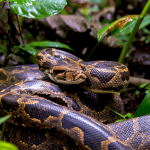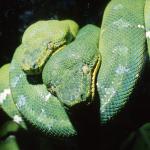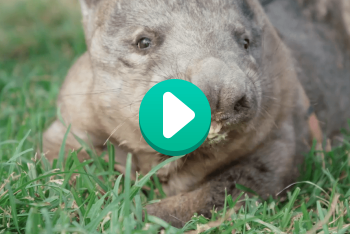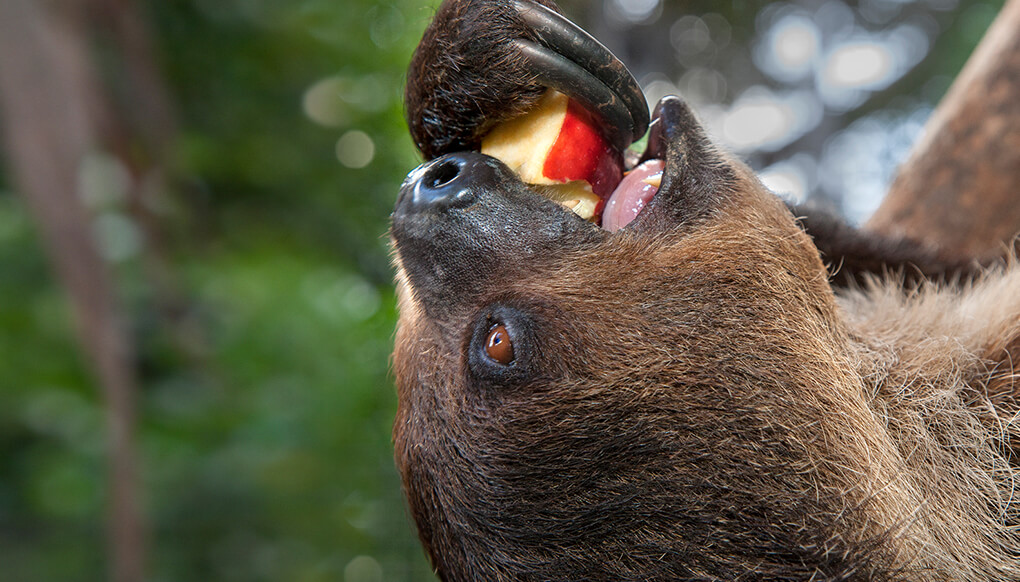
Two-toed sloth

Mammals


Stable
facts


Leaves, stems, buds, fruit
description
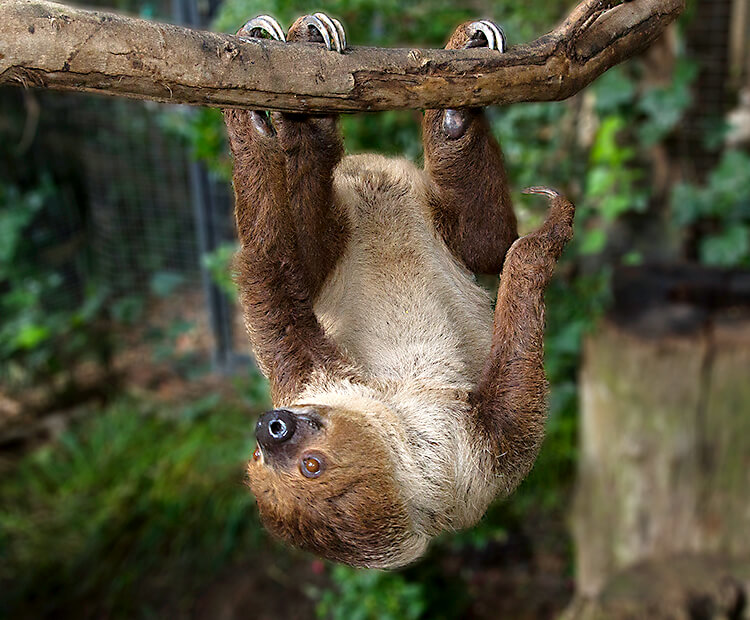
Upside-down view
The two-toed sloth, a nocturnal animal that lives in trees in Central and South America, lives at its own pace—a slow one! Using its long, sharp claws, the sloth makes its way through the branches hanging upside down. What a funny view!
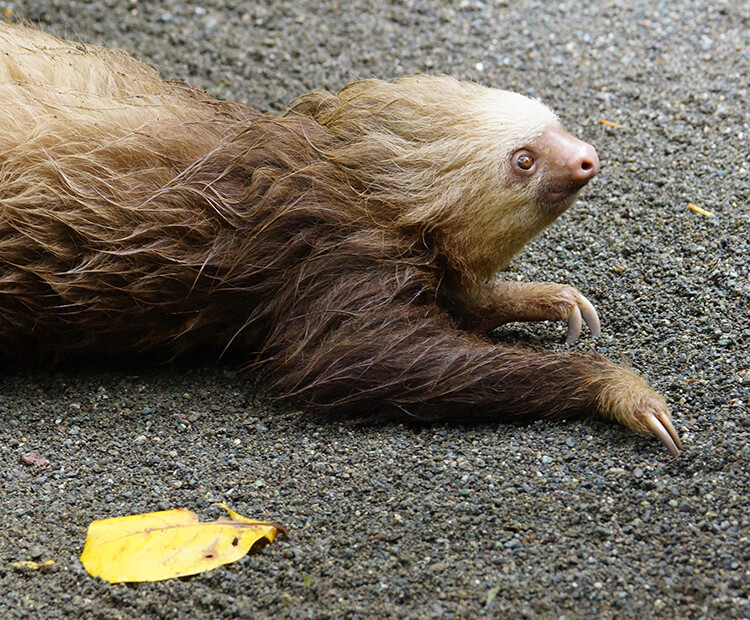
The water's fine!
A sloth's claws are handy for hanging onto tree branches but make walking on the ground hard. But sloths are great swimmers and can drop from a tree into a river to swim across it while doing the breaststroke! When sleeping, sloths often curl up in a ball in the fork of a tree.
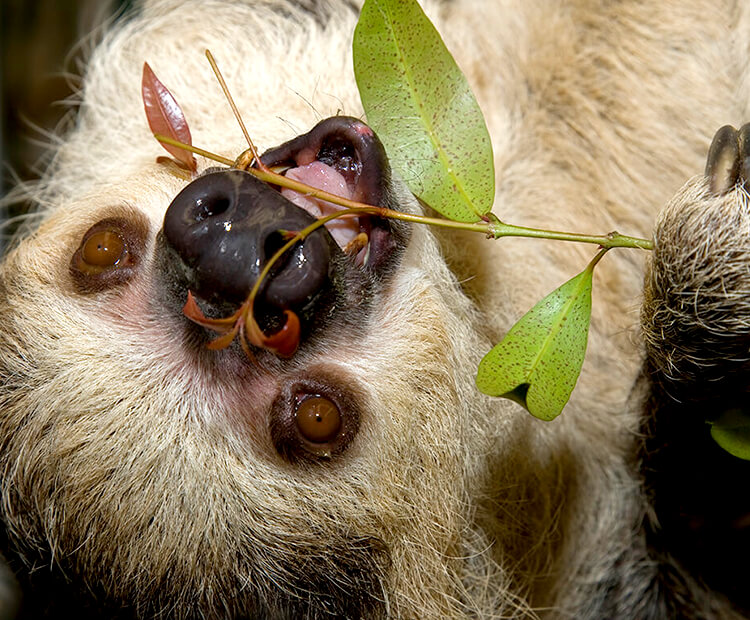
Special stomachs
The reason sloths move so slowly has a lot to do with what they eat: a variety of leaves, stems, buds, and some fruit. This kind of diet requires a special digestive system. Sloths have a large, four-chambered stomach, like a cow.
The next time someone tells you to hurry up, just say you're taking your time—just like a sloth!

